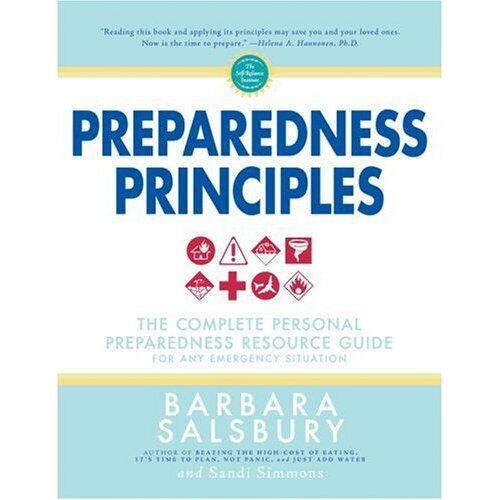Lately I’ve been reading Preparedness Principles by Barbara Salsbury and Sandy Simmons. Being prepared is something that has been oft repeated to us for generations, but by and large, the majority of people don’t have seventy-two hour kits, never mind enough food to feed their families for weeks or months at a time.
After explaining a number of calamities that happened to Salisbury in the introduction, she states: “It is possible to keep going even when the floor drops out from under your feet, but it doesn’t happen by accident. It happens because you are prepared.”
I think the main reason we aren’t ready is because we’re overwhelmed, and unsure how to go about preparing for calamity, whatever it may be—which is why this book is so wonderful. The authors begin by explaining that “Preparedness is much more than just ‘food storage.’
Food certainly factors into it, but it is more than just that. It is self-sufficiency applied in a very personal manner. It is being in control during out-of-control situations.” The book lays out these kinds of situations by dividing them into four types:
1) Long-term calamity where you may not be able to buy supplies, but you will still be in your home with working power and water,
2) Rainy days and hard times where food and supplies are available, but you may not have the money to buy them,
3) Natural or man-made disasters where you are in your home but unable to leave, and without power or water, and
4) Natural or man-made disaster where you will be required to evacuate your home.
Throughout the rest of the book, you learn how to prepare for each of these types of problems. While they give you a general list of what to pack like other sources, they also give you suggestions and guidelines that you can use to easily tailor your own list to fit your personal needs. These ladies offer a list of suggested foods, but unlike many other preparedness lists, they give you lots of ideas of how to use those items and prepare them for cooking and alternatives for foods you might run out of.
Another difficulty many families encounter is lack of places to put food storage, but even this seemingly impassable problem is addressed. “The second rule for gaining a pantry: don’t limit yourself to spaces normally identified as cupboard space or pantry space. Nooks and crannies and unusual places can play a significant role.”
Then they get right into helping you identify places to store the food and supplies you and your family will need if you experience a financial setback or major disaster. But it doesn’t end at building pantry solutions. The authors take you through preparations for all kinds of disasters from turning off your gas in an emergency, to emergency cooking solutions, creating meals solely from your pantry, to different kinds of gardens for small places.
This book has a wealth of knowledge we all can use, and as the authors say: being a little prepared is better than not preparing at all.This book is 384 pages and can be purchased here. It was published by Cedar Fort, Inc. in August of 2006 and can be ordered at your local bookstore by giving the clerk either ISBN-10: 0882908065 or ISBN-13: 978-0882908065
